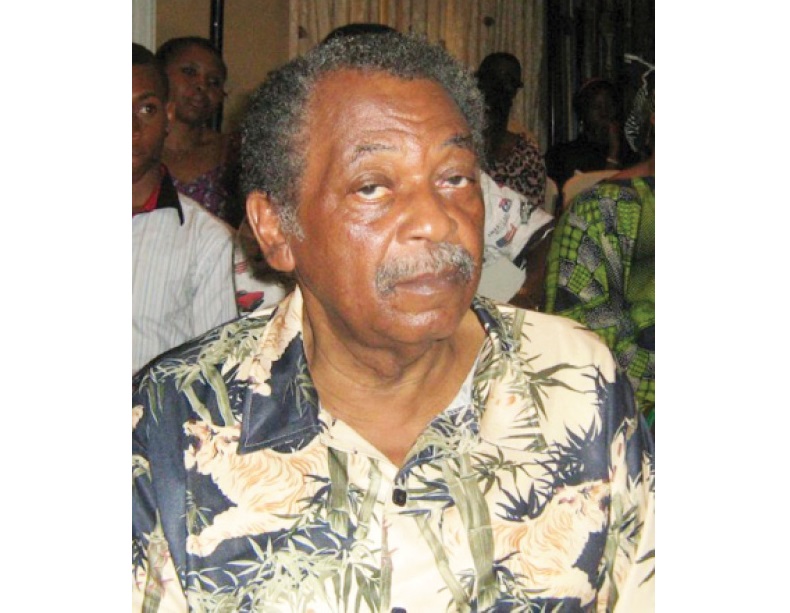David Dale: Art community mourns colossus
News of the death of David Dale, one of Nigeria’s most celebrated experimental artists, has been received with shock across the creative industry and beyond. Described as cerebral, yet unassuming, Dale’s contemporaries among other stakeholders, have said his indelible marks are too conspicuous to be ignored within the Nigerian art space. Born in 1947 in […]

News of the death of David Dale, one of Nigeria’s most celebrated experimental artists, has been received with shock across the creative industry and beyond.
Described as cerebral, yet unassuming, Dale’s contemporaries among other stakeholders, have said his indelible marks are too conspicuous to be ignored within the Nigerian art space.
Born in 1947 in Nigeria to a Scottish father and Nigerian mother, Dale was taken to the United Kingdom to live with his aunt when he was two years old. He returned to Nigeria to complete his secondary school education at St. Gregory’s College, Lagos before proceeding to Ahmadu Bello University, Zaria, where he graduated in Graphics and Design in 1971. He was of the famous Zaria Art society.
Kolade Oshinowo, a former National President of the Society of Nigerian Artists (SNA), in a phone interview with Daily Trust on Sunday, spoke fondly about his departed friend and the health crisis that eventually claimed his life.
Oshinowo, a known contemporary of the late Dale, said, “He was a year ahead of me in Zaria. It was obvious he made his marks when he was alive. Unfortunately, he developed his health challenges from his work, relating to print-making. He was affected by Araldite. He went for detoxification in the United States. After that, he suffered stroke and I would say that was the beginning of the downhill of his health.
“Consequently, his studio practice suffered. He tried to stage a comeback but it was really difficult. I am 71 and David was some months ahead of me. When you get to that age, there is a limit to the extent of pain the body can take. God knows best. He has now gone to rest” Oshinowo said.
Dale was reported to have died on Tuesday, August 6 at the Military Hospital, Yaba at about 4am.
Oshinowo said unknown to many, Dale and his family were closer because of their common love for horticulture. He said the love for plant was mutual between Dale and his own wife.
In a statement by the Acting Director General, National Art Gallery (NGA), Dr. Simon Ikpakronyi, described Dale as someone who has left a void that would be very difficult to fill in the visual art sub-sector, where he was a major player for more than four decades.
“He will be greatly missed by the arts community. Our prayers go to the immediate family especially his daughter, Mrs. Patience Ejeba, for succour and strength at a time like this. NGA also condoles with Nigerian artists for this irreparable loss.
“Some of his rare works in the national collection of NGA are: Sunshine in the Province, Zaria, Cry of three Spirits, Dubar and King Tortoise. A close ally of NGA, in 1998, Dale was one of artists invited to catalogue members the Zaria Art Society from which the book, ‘Goooonoemo: The Zaria Art Society,’ ‘A New Consciousness’ emerged.
“He held 58 solo and group exhibitions within and outside Nigeria. His works are in public and private collections. May God grant him eternal rest.”
Similarly, Sandra Mbanefo-Obiago, art curator and founder, SMO Contemporary Art described Dale’s death as irreparable.
“We have lost a great artist, a living treasure of Nigeria. His expression in multiple and diverse media were always refreshing, powerful and beautiful. He has left behind an indelible mark in the art and creative industry,” Mbanefo-Obiago said.
Largely influenced by his former teacher and mentor, Bruce Onobrakpeya, Dale became popular with lino engraving and foil methods. He later delved into printmaking and worked with a variety of media through what many know as, ‘21 Art Media.’ This includes, coloured beads, charcoal and stained-glass technique, metal (foil work), mosaic, fresco, silk screen (seriography) and painting, among others.
